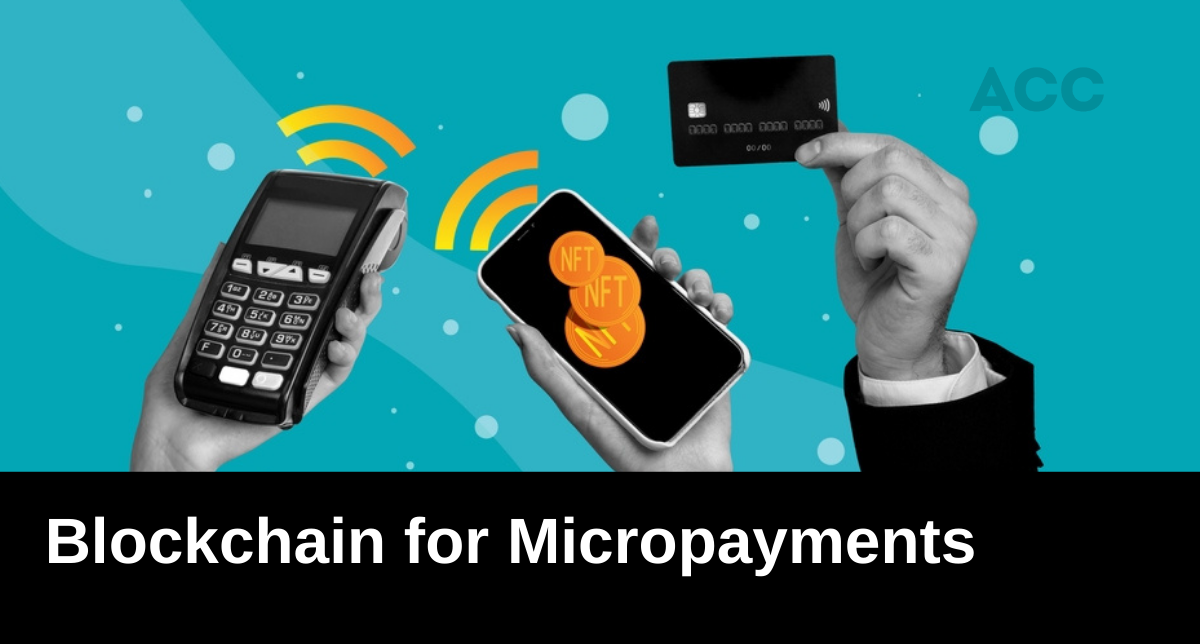Micropayments—transactions involving very small sums of money, often less than a few cents—have long been seen as a challenge in traditional payment systems. These tiny transactions, essential for use cases like pay-per-article content, online gaming, streaming, and micro-donations, are usually hindered by high processing fees, slow transfer times, and the overhead associated with conventional financial networks.
The question many are now asking is: can cryptocurrency solve the issues of micropayments? With the rise of blockchain technology, crypto offers a compelling alternative for frictionless and cost-effective micropayments, but challenges still remain.
In this article, we’ll explore the benefits of crypto-based micropayments, analyze the hurdles, and examine whether blockchain can truly revolutionize the micropayment landscape.
Why Traditional Payment Systems Struggle with Micropayments?
Traditional payment processors like Visa, PayPal, or MasterCard charge flat transaction fees ranging from 1.5% to 3.5% per transaction, often coupled with additional fixed costs (like $0.30 per payment). When the transaction amount is very small, these fees become prohibitively expensive. For example, a $0.50 transaction could carry a $0.30 fee, meaning more than 60% of the payment goes to fees.
These limitations impact many industries:
- Content creators offering pay-per-article services or music streaming platforms
- Microlending initiatives and charitable micro-donations
- Gaming or in-app micro-purchases
Traditional banking infrastructure is also too slow to enable seamless, real-time microtransactions at scale, making it impractical for high-frequency payment models like pay-per-second streaming.
How Cryptocurrencies Address Micropayment Issues
1. Lower Transaction Costs
Cryptocurrencies like Bitcoin (with Lightning Network) and Ethereum (using Layer 2 scaling solutions) enable low-cost transactions. Blockchain eliminates intermediaries like banks and payment processors, significantly reducing fees. Some crypto networks can process transactions for a fraction of a cent, making micropayments feasible.
- Bitcoin’s Lightning Network: This second-layer protocol processes small transactions off-chain, settling them later on the Bitcoin blockchain. It offers extremely low fees and faster confirmation times.
- Nano (XNO): Nano is specifically designed for feeless and instant transactions, making it ideal for micropayments.
2. Faster Transactions with Blockchain
Conventional payment systems involve several intermediaries, causing delays. Cryptocurrencies provide near-instant settlements, which is especially useful for micro-purchases in gaming, live streaming, or IoT ecosystems. Platforms like Stellar and Ripple focus on speeding up cross-border microtransactions.
3. Access to Unbanked Populations
Crypto opens up micropayment opportunities for users without access to traditional financial systems. With just a smartphone and internet access, anyone can make micropayments without relying on banks or credit cards. This is particularly beneficial in developing countries and for cross-border transactions.
4. Programmable Payments via Smart Contracts
Smart contracts on networks like Ethereum allow automated, programmable payments. Micropayments can be distributed in small chunks over time, enabling new business models such as pay-per-use services, pay-per-minute subscriptions, or machine-to-machine payments in the Internet of Things (IoT) industry.
Real-World Applications of Crypto Micropayments
1. Pay-Per-Article or Paywall Content
Several platforms are experimenting with crypto-based micropayments for content consumption. Instead of subscribing to an entire service, users can pay a small amount (like $0.05) per article using cryptocurrencies.
Example: The Brave Browser integrates with the Basic Attention Token (BAT), allowing users to reward content creators directly through micropayments.
2. Gaming and Virtual Goods
Crypto-based micropayments are growing in popularity within the gaming industry. Blockchain-based games and marketplaces enable users to buy in-game items, tokens, or virtual land with small crypto payments.
Example: Games like Axie Infinity and Decentraland use tokens for in-game transactions and micro-purchases.
3. Micro-Donations and Tipping Systems
Cryptocurrencies have enabled new tipping models where users can reward content creators with micro-donations. Platforms like Twitter’s Tips feature now integrate Bitcoin Lightning payments, enabling users to send small tips directly.
4. Streaming and IoT Payments
Platforms offering on-demand media streaming are experimenting with pay-per-second or pay-per-view models, where users only pay for the exact content they consume. Similarly, IoT devices can transact with each other through crypto micropayments, facilitating seamless machine-to-machine payments.
Challenges of Crypto-Based Micropayments
While cryptocurrencies present several advantages, some challenges remain:
1. Volatility of Crypto Assets
Most cryptocurrencies are highly volatile, making it difficult to determine the exact value of a microtransaction. Stablecoins like USDC or DAI mitigate this issue by pegging their value to a fiat currency, but adoption is still limited in some sectors.
2. Scalability Issues
Despite improvements, some blockchain networks face scalability issues when processing high volumes of small transactions. Congestion on networks like Ethereum can drive up fees, limiting the feasibility of micropayments without Layer 2 solutions.
3. Regulatory Uncertainty
Regulatory frameworks around cryptocurrencies vary from country to country, and changing regulations can create uncertainty for businesses adopting crypto-based micropayments.
4. User Experience and Adoption Barriers
For non-crypto users, setting up wallets and managing keys remains a hurdle. Seamless onboarding processes and user-friendly interfaces are essential for widespread adoption of crypto micropayments.
Future of Crypto in Micropayments
Several initiatives and technologies are emerging to address the existing challenges of crypto micropayments:
- Layer 2 Solutions: Protocols like Lightning Network and Polygon are enhancing scalability and reducing fees.
- Cross-Blockchain Interoperability: Projects like Cosmos and Polkadot aim to create a more seamless crypto ecosystem, allowing micropayments across multiple chains.
- CBDCs (Central Bank Digital Currencies): If implemented with proper frameworks, CBDCs could facilitate instant and low-cost micropayments, bringing the advantages of crypto into the regulated financial sector.
As more platforms integrate cryptocurrency solutions and the blockchain ecosystem matures, the potential for micropayments to revolutionize digital transactions will grow.
Conclusion
Cryptocurrencies offer a viable solution to the longstanding issues surrounding micropayments by providing low-cost, fast, and accessible transactions. Innovations like the Lightning Network, smart contracts, and Layer 2 solutions have made it possible to scale micropayments effectively, unlocking new opportunities in content creation, gaming, streaming, and IoT. However, challenges related to volatility, scalability, and regulation still need to be addressed.
If these hurdles are overcome, crypto-based micropayments have the potential to disrupt traditional payment models, creating new business opportunities in a rapidly evolving digital economy.

A.k.a – alpha girl. Vinita is the founder of Alphachaincrypto. An English Lit Majors, Vinita bumped into Web3 in 2020 only to realise that tech was her calling. Later, Mathreja worked for some notable brands like Near Education, Biconomy, CoinDCX and top of the line crypto start ups.





